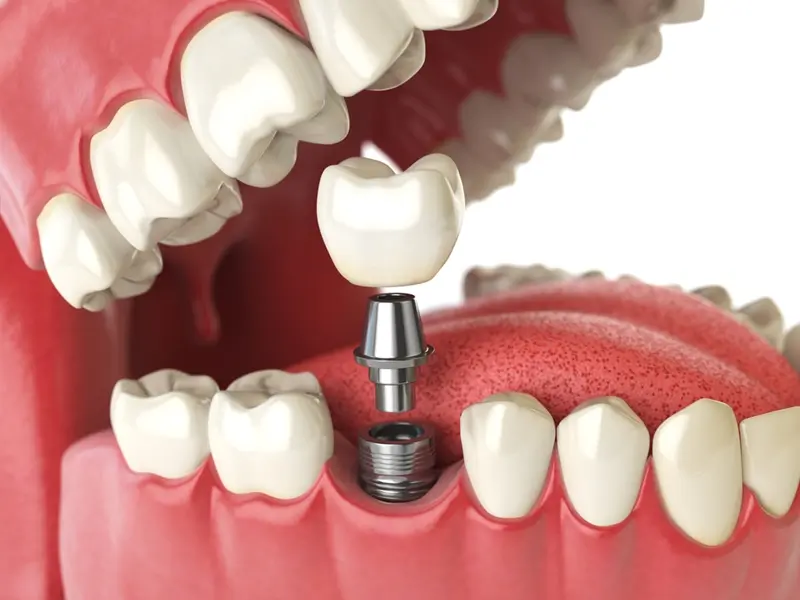While a dental crown won't necessarily fix a problem, it can certainly help prevent a cracked tooth getting worse, and keep it in top condition. Whether or not a crown is necessary depends on the severity of the injury. In some cases, a cracked tooth doesn't require any treatment at all, whereas at other times it might need replacing completely.
Let's take a look at some cracked-tooth scenarios and whether or not a dental crown can help.
When a dental crown can help a cracked tooth
When a cracked tooth is causing discomfort, it does require treatment. At times, a cracked tooth can be difficult for the dentist to identify, especially if it is not visible to the naked eye, or is hidden under the gum line. This is known as cracked tooth syndrome, where the patient experiences the symptoms but the location is not obvious.Where a cracked tooth doesn't cause any pain or discomfort, it might actually be a craze line. Craze lines are very small cracks in the outer layer of the tooth caused by general wear and tear. They're fairly normal in adult teeth and do not require any treatment, although the dentist may be able to polish the tooth to improve its appearance.
Once the crack has been found, the treatment depends on its size, location and type. A relatively shallow or small crack may be repaired with a form of filling, to stop it from worsening and prevent infection. If this happens, a crown may be applied to provide extra protection, and to enhance aesthetics. Even larger vertical cracks that affect only the top of the tooth and have not yet reached the gum line are often treatable without needing to remove the tooth.
A dental crown will be placed over the remainder of the natural tooth to protect it against further infection.
However, where the crack is deep enough that there is a possibility of infection, it may be necessary to perform a root canal treatment. The procedure involves drilling a hole in the top of the tooth to allow the dentist to remove the pulp – the soft tissue inside the tooth that contains blood vessels and nerves, which could get infected.Once the first stages of the treatment are complete, a dental crown will be placed over the remainder of the natural tooth to protect it against further infection and to enhance its appearance.
At the very worst, a cracked tooth may need to be removed. Where a crack has split a tooth almost entirely, or if it is a vertical root fracture – a crack that originates below the gum line and goes up – an extraction is often necessary. When a tooth is removed, it's always preferable to replace it, to ensure a stable bite and keep remaining teeth well aligned. The replacement tooth may involve a dental bridge or dental implant, and in both cases, a dental crown is a key part of the treatment. A dental bridge involves two crowns, one at each end of the bridge, which sit over existing neighbouring teeth. With a dental implant, a crown is placed over a metal rod which functions as the root of the tooth. In these cases, the crowns work to maintain appearances, allow the replacement to function as normal and to hold the new tooth in place.

What are the symptoms of a cracked tooth?
If you think you may have a cracked tooth, it's important to seek professional advice. Some of the symptoms of a cracked tooth include:
- Pain or discomfort when chewing or biting
- Sensitivity to hot or cold foods and drinks
- Swelling around the affected tooth
- Intermittent pain that returns periodically but is not continuous
To make an appointment or to talk to us about your symptoms, call City Dentists on 04 978 4964 or book an appointment online.
